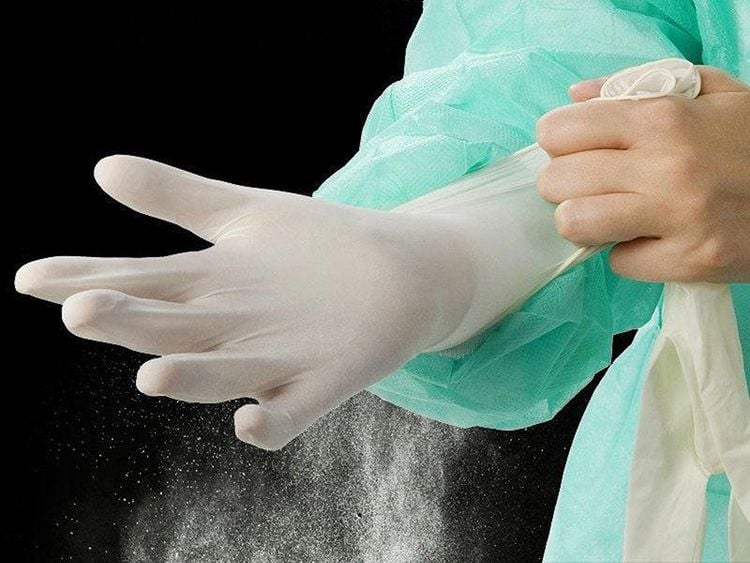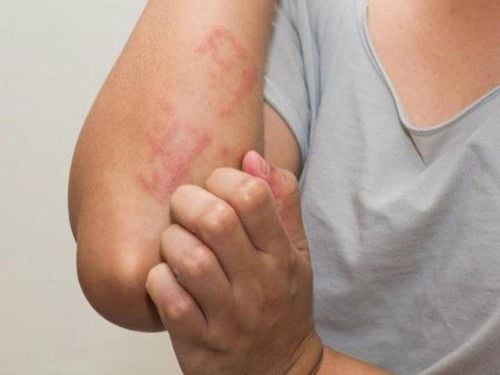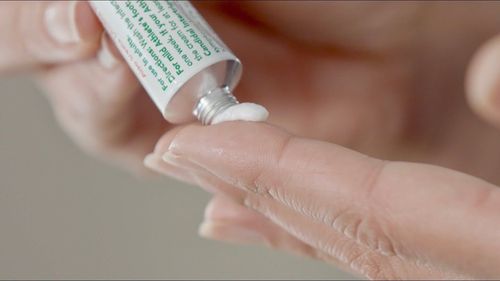This is an automatically translated article.
Some people are allergic to latex, which is found in latex gloves and other products, like condoms and some medical devices. Understanding latex allergies and knowing the common sources of latex can help you prevent an allergic reaction.
1. What is latex allergy?
Latex is a milky milky white resin from plants such as the tropical rubber tree. Plastic is used to make rubber products such as household and medical gloves, shoes, tires, balloons, condoms, etc. During the manufacturing process, chemicals act as catalysts. is added to harden the latex, and the rubber product is heated, then washed. The resulting product, in addition to latex, may contain residual (non-latex) additional proteins and chemicals, and these may also cause allergic reactions.2. Causes of latex allergy
Most people have daily exposure to latex-containing products without problems. However, there are a small number of people who are allergic to latex, and your immune system identifies latex as a harmful substance and activates certain antibodies to fight it. The next time you're exposed to latex, these antibodies trigger your immune system to release histamine and other chemicals into your bloodstream, creating a variety of allergy signs and symptoms. The more times you are exposed to latex, the stronger your immune system is likely to respond.

Người bệnh bị dị ứng mủ nhựa khi tiếp xúc với vật liệu cao su có chứa latex
Latex allergy can happen in the following ways:
Direct contact: The most common cause of latex allergy is related to touching products containing latex, including latex gloves, condoms. rubber and balloons. Inhalation: Latex products, especially gloves, release latex particles, which you can breathe in when they are released into the air. The amount of latex in the air from a glove varies greatly depending on the brand of glove used.
3. Symptoms of latex allergy
If you are allergic to latex, you are more likely to experience symptoms after touching latex products, like gloves or balloons. You can also have symptoms if you breathe in latex particles that are released into the air when someone removes a rubber glove. Symptoms of a latex allergy range from mild to severe. A reaction depends on how sensitive you are to latex and how much latex you touch or breathe in.
Symptoms of a mild latex allergy include:
Itching Red skin Rash

Dị ứng mủ nhẹ khiến da đỏ và ngứa
More severe symptoms include:
Sneezing Runny nose Itching, watery eyes Burning throat Difficulty breathing Wheezing Cough Life-threatening symptoms: Anaphylaxis
The most serious allergic reaction to latex is anaphylaxis , which can be fatal. Anaphylactic (anaphylactic) reactions occur immediately after exposure to latex in very sensitive individuals, but are rare on first exposure.
Signs of anaphylaxis include:
Difficulty breathing Rash or swelling Nausea and vomiting Wheezing Low blood pressure Dizziness Loss of consciousness Confusion Fast or weak pulse. Get emergency medical help if you are having or think you are having an anaphylactic reaction.

Dị ứng latex nghiêm trọng nhất có thể dẫn đến sốc phản vệ
4. How to handle latex allergy
Although medication can reduce latex allergy symptoms, it is not a complete cure. The only way to prevent a latex allergic reaction is to avoid products that contain latex.
For mild allergic reactions, your doctor may prescribe antihistamines or corticosteroids, which you can take after latex exposure to control your reaction and help ease discomfort.
If you are at risk for a severe latex allergy and have been prescribed an adrenaline (epinephrine) auto-injector (adrenaline pen), it is important that you know how to use it and to carry it with you at all times. It is advisable to instruct the people around you (friends, family, teachers and colleagues...) how to use and where to get this pen when needed, and also regularly check the expiration date of the pen. pen.
People who are allergic to latex may also be allergic to tropical fruits, especially bananas. Similarly, people who are allergic to bananas may be allergic to latex. Because banana contains protein very similar to tropical rubber tree. Other vegetables and fruits that can cause a similar reaction to latex include avocados, celery, figs, chestnuts, papayas, and passion fruit. Therefore, care should be taken when using these foods.
Vinmec International General Hospital is a high-quality medical facility in Vietnam with a team of highly qualified medical professionals, well-trained, domestic and foreign, and experienced.
A system of modern and advanced medical equipment, possessing many of the best machines in the world, helping to detect many difficult and dangerous diseases in a short time, supporting the diagnosis and treatment of doctors the most effective. The hospital space is designed according to 5-star hotel standards, giving patients comfort, friendliness and peace of mind.
Please dial HOTLINE for more information or register for an appointment HERE. Download MyVinmec app to make appointments faster and to manage your bookings easily.













